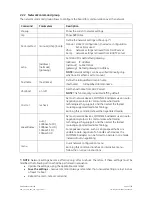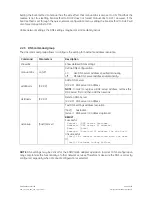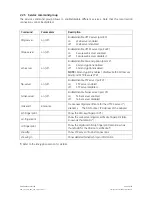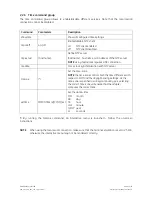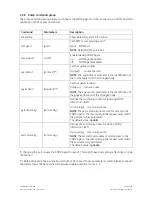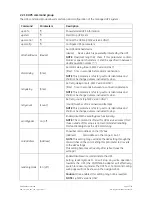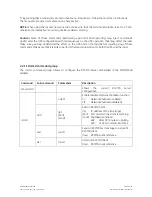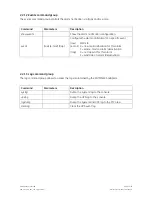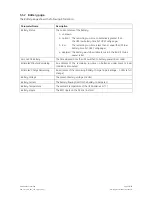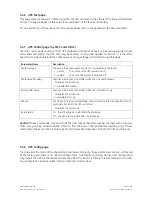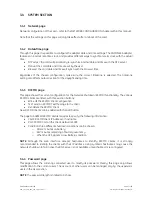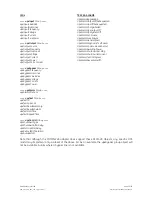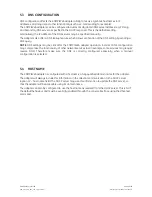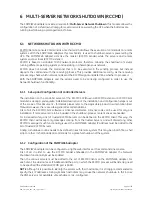
3.3.3 UPS Status page
The
UPS status
page shows the following information for each of the input / output / bypass lines.
Parameter Name
Description
Frequency
Line frequency (in Hertz)
Voltage
Line RMS voltage (in Volts)
Line RMS current (in Amperes)
Current
Power / True Power
Line True Power (in Watt)
Load %
The power capacity presently being used (percentage)
[Output only]
Volt min
Lowest input voltage in the present time-period (in Volts)
[Input only]
Lowest input voltage in the present time-period (in Volts)
[Input only]
Volt max
Also the following information is presented:
Parameter Name
Description
Input Line Bads
Number of times the mains input went out-of-tolerance since UPS start-up
The present source of the output power
Output Source
Note:
none
means there is no output power
Finally, a 3-ph system featuring the PMAD functionality will also show the following:
Parameter Name
Description
The present output power factor. A positive value indicates an inductive load;
while a negative value indicateS a capacitive load.
Power factor
Note: the power factor cannot be reliably determined in low load conditions. In
this case, the value will not be available (N/A)
The output peak current
Peak current
Share current
In a parallel system ideally all the UPS are requested to contribute to the load
with the same amount of current, i.e. with no current share. The current share
occurs when an UPS exchanges some current with another UPS, so that this
current component doesn't feed the load.
The PMAD functionality detects the amount of share currents in a parallel
system. Obviously, single system do not provide this functionality and will show
this value as not available (N/A).
3.3.4 UPS Alarm page
This page presents the UPS active alarms (if any) with an indication of the time elapsed since the
activation (in seconds). Once again, the supported alarms depend on the specific UPS model.
For the meaning of each specific alarm refer to the relevant UPS documentation.
3.3.5
UPS PMAD
page (3-ph version ONLY)
This page presents diagnostic related readings from UPSs implementing the PMAD (Preventive
Maintenance and Advanced Diagnostic) functionality. These include the following:
Parameter Name
Description
The remaining time before a check of the specific devices / system is required
Life Time
Count of failures and transients on mains input and bypass
Mains Statistics
Bus Communication
Qty of UPSs: Number of UPSs as currently seen in the parallel system.
(The reset button forces a refresh of the count and the display)
Channel table: The table shows the actual communication status over the two
redundant buses between the unit currently selected (in green bold) and other
units.
Modifications reserved
Page 29/58
OPM_CNT_SNM_BAS_CRD_1GB_V012.doc
Operating Manual
SNMP/Web Adapter

